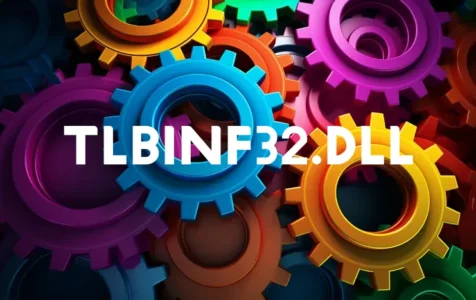Introduction to TLBINF32.DLL
The TLBINF32.DLL file is known as the TypeLib Information Objects library and is associated with the automation of extracting information from COM type libraries. Developers often use it to programmatically explore the contents of COM components, such as methods, properties, and classes. It’s primarily designed to be used with older 32-bit systems and was commonly employed in software development using environments like Visual Basic.
Is TLBINF32.DLL Safe to Run?
The TLBINF32.DLL file itself, when obtained from a legitimate source like Microsoft or trusted software installation packages, is safe to run. It is not inherently malicious or harmful to your computer system.
Could TLBINF32.DLL Be a Virus or Malware?
As with any DLL file, there is a potential for it to be replaced or masqueraded by a virus or malware. To ensure it is not a security threat, you should only download the TLBINF32.DLL file from trusted sources. It’s also recommended to run regular virus scans on your system with up-to-date antivirus software to prevent and detect any malicious activity.
Common Issues Associated with TLBINF32.DLL
There may be some problems related to TLBINF32.DLL, which include:
Expert Tip: For smoother PC performance, consider using a PC optimization tool. It handles junk files, incorrect settings, and harmful apps. Make sure it's right for your system, and always check the EULA and Privacy Policy.
Special offer. About Outbyte, uninstall instructions, EULA, Privacy Policy.
– The file is missing or deleted: This can occur if a program is uninstalled and mistakenly removes TLBINF32.DLL, thinking it is no longer needed.
– Corruption by malware: If the file is corrupted by a virus, it may cause errors.
– Registry issues: Problems in the Windows registry can lead to DLL errors.
– Incompatibility with 64-bit systems: TLBINF32.DLL is an older COM DLL and may not have a direct 64-bit equivalent, causing difficulties when trying to run 32-bit DLLs on a 64-bit system without proper bridging or emulation.
How to Fix Issues with TLBINF32.DLL
If you encounter issues with the TLBINF32.DLL file, here are some methods to resolve them:
Method 1: Installing the TLBINF32.DLL Library to the Windows System Directory
– Download TLBINF32.DLL from a trusted source.
– Copy the downloaded file to the Windows system directory (usually C:\Windows\System32\).
Method 2: Copying The TLBINF32.DLL Library Into The Program Installation Directory
– Following a download from a trusted source, place the DLL file in the installation folder of the program that’s requesting it.
Method 3: Uninstalling and Reinstalling the Program that Gives You the TLBINF32.DLL Error
– Uninstalling and then reinstalling the application associated with the DLL error may restore the file.
Method 4: Fixing the TLBINF32.dll Issue by Using the Windows System File Checker (sfc /scannow)
– Open Command Prompt with administrative privileges.
– Enter the command “sfc /scannow” to scan and repair system files.
Method 5: Fixing the TLBINF32.dll Errors by Manually Updating Windows
– Regularly update your Windows OS to ensure you have the latest versions of system files and drivers.
Method 6: Scan your PC for malware to fix tlbinf32.dll error
– Perform a full system scan using Windows Defender or your preferred antivirus to check for and remove malware.
Method 7: Registering the DLL file
– Launch Command Prompt as an administrator.
– Type “regsvr32 tlbinf32.dll” and press Enter.
Method 8: Repair with a System Restore
– If recent changes caused issues with the DLL file, performing a system restore to a date before the changes can rectify the problem.
User Experiences and Community Discussions
Through community discussions, such as those found on Stack Overflow and other forums, developers have shared their challenges and solutions regarding the use of TLBINF32.DLL, especially in the context of 64-bit .NET applications. Some users suggest creating a separate surrogate process to host the DLL and interact with it from a 64-bit environment. This can be quite technical and may require step-by-step guidance, which may be found in detailed answers within relevant discussions.
If you’re interested in user experiences or need additional assistance, checking out community forums (like this Stack Overflow thread) can be very helpful. Experts and experienced users usually offer advice, alternative solutions, or workaround methods that have worked for them.
Conclusion
TLBINF32.DLL is a critical file for certain applications that require interaction with COM type libraries. While it poses some compatibility challenges, especially on 64-bit systems, there are multiple ways to address the issues arising from its use. As always, safeguard your DLL files through regular updates, antivirus scans, and by using trusted sources for any downloads or fixes.
